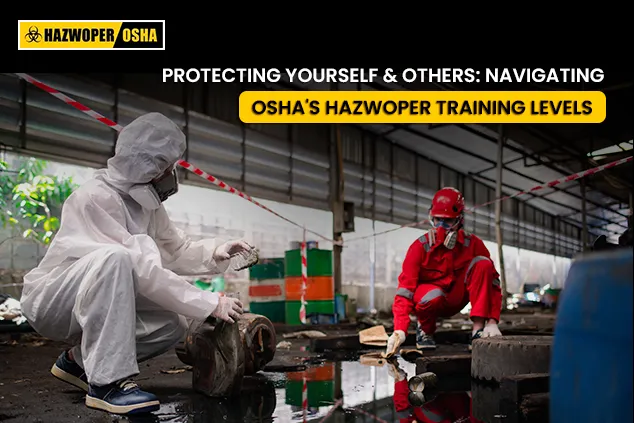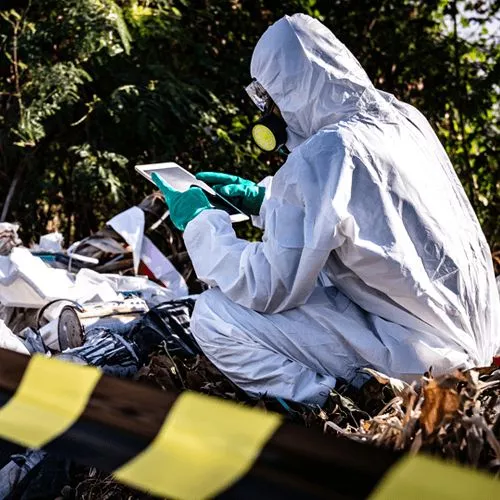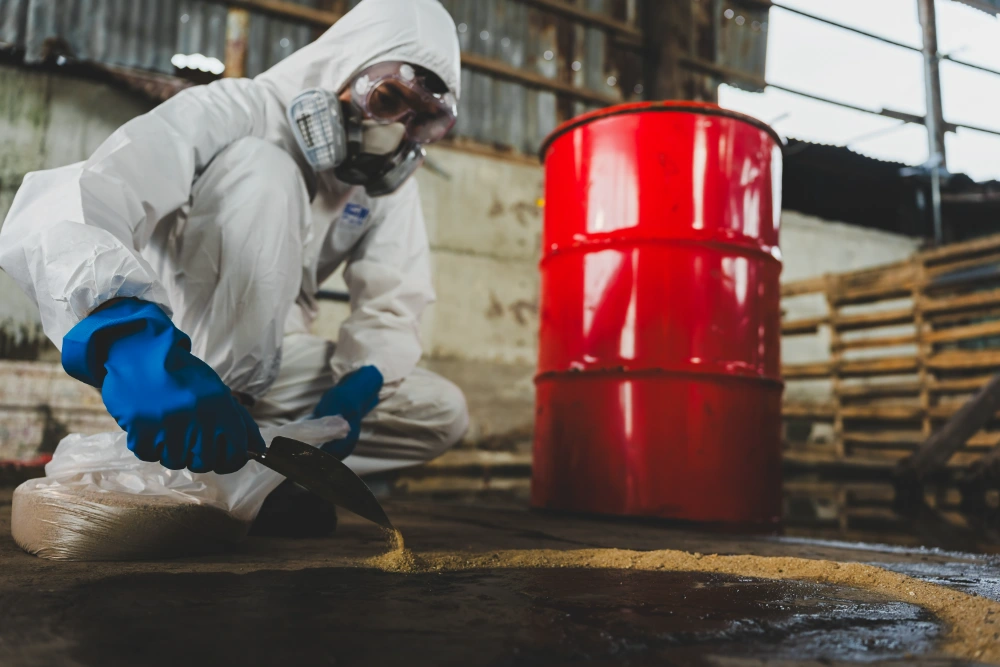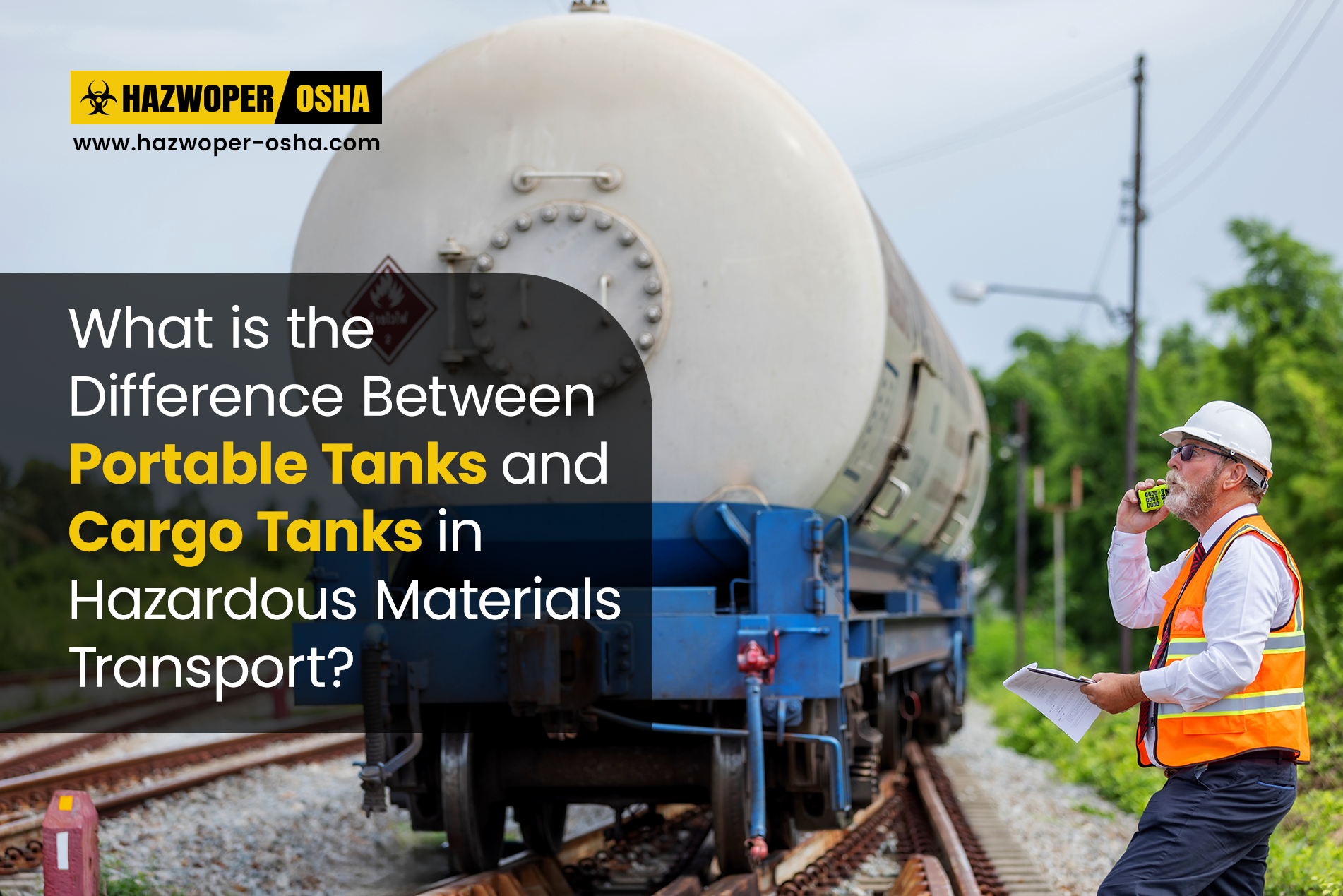Protecting Yourself and Others: Navigating OSHA's HAZWOPER Training Levels

Working with hazardous materials requires more than just gloves and goggles. It demands knowledge, skill, and preparedness to prevent harm to yourself, your team, and the environment. That's where OSHA's Hazardous Waste Operations and Emergency Response (HAZWOPER) standards come in, prescribing essential HAZWOPER training levels for various individuals employed in diverse tasks related to hazardous waste operations, and facing potential exposure to hazardous materials.
The OSHA HAZWOPER standards for the Construction Industry and General Industry are found in 29 CFR 1910.120 and 29 CFR 1926.65, respectively. These HAZWOPER standards outline different levels of training based on the responsibilities and potential exposure levels of workers.
But with different training levels, diverse workplaces like site clean-up operations and TSD facilities, and the ever-present presence of emergency response calls, figuring out your exact training needs can be confusing. This article endeavors to simplify your journey, guiding you through the types of HAZWOPER training levels and ensuring you're equipped for your specific job role and work tasks.
Remember!HAZWOPER Training is designed to provide workers with the knowledge and skills necessary to safely handle hazardous materials.
Understanding the Tiers: Levels of HAZWOPER Training Explained
Different work environments have specific needs. As such, the HAZWOPER training falls into three main categories dependent on the type of work carried out.
- Site Clean-Up Operations:If you're on the front lines of cleaning up contaminated sites, in-depth training in decontamination procedures, hazard communication, and advanced technical skills in addition to drum and container handling, site characterization, and site-specific decontamination procedures is crucial.
- Treatment, Storage, and Disposal (TSD) Facilities:Working at a TSD facility requires expertise in specific waste types and their risks, safe handling and storage procedures, and emergency response protocols for spills and releases. Decontamination procedures for equipment and personnel are also key.
- Emergency Responders:Whether you're a firefighter, EMT, or police officer, your HAZWOPER training should focus on initial scene assessment, perimeter establishment, and safe interaction with hazardous materials until specialized cleanup crews arrive.
Site Clean-Up Operations (HAZWOPER (e) Series Training)
The basic and widely applied HAZWOPER training is further divided into three categories.

40-Hour HAZWOPER Training:
Designed for personnel who anticipate direct and routine contact with hazardous materials. This in-depth training delves into decontamination procedures, hazard communication, and advanced technical skills. Suitable for hazardous waste cleanup crews and environmental technicians.

24-Hour HAZWOPER Training:
Perfect for workers with limited exposure to hazardous materials. This training covers basic recognition, assessment, and control of hazards, focusing on emergency response procedures. Ideal for maintenance workers or first responders on the initial scene.

8-Hour Refresher Training:
Mandatory annual training for those already holding a 24-hour or 40-hour HAZWOPER certification. Think of it as keeping your safety knowledge sharp and updated.
Remember, these categories are just the foundation. OSHA encourages employers to go beyond the minimum by providing site-specific training tailored to the unique hazards and procedures of their specific workplace. This ensures workers are fully prepared for the real-world challenges they might encounter.
Treatment, Storage, and Disposal (TSD) Facilities (HAZWOPER (p) Series Training)
Working at a Treatment, Storage, and Disposal (TSD) facility is far from a walk in the park. It's navigating carefully with hazardous materials, demanding specialized knowledge and skills to protect both yourself and the environment. That's where HAZWOPER training comes in.
Think of TSD facilities as the unsung heroes of waste management. They handle, treat, and dispose of hazardous materials that would otherwise pose serious environmental and human health threats. But with great responsibility comes great risk. That's why proper HAZWOPER training is not just essential, it's mandatory for all TSD facility workers.
Understanding TSD Facility Training Needs:
Workers within TSD facilities face unique hazards and require specific training beyond the general HAZWOPER categories. Their training should address:
- Specific waste types and their associated risks.
- Safe handling and storage procedures for hazardous materials.
- Emergency response protocols for spills and releases.
- Decontamination procedures for equipment and personnel.
- Compliance with relevant regulations and permits.
Employees of TSD facilities require further specialized HAZWOPER training where they receive more comprehensive knowledge of hazard exposure in such environments. Here's an overview of the HAZWOPER training for TSD facility workers:

Initial 24-Hour Training:
This lays the groundwork, equipping workers with basic hazard recognition, assessment, and control techniques. It's the essential toolkit for safely navigating daily operations.

8-Hour Refresher Training:
Compulsory 8-hour yearly training is required for individuals who have already obtained a 24-hour Treatment, Storage, and Disposal (TSD) HAZWOPER certification.
HAZWOPER Training for Emergency Responders (HAZWOPER (q) Series)
HAZWOPER training is critical for emergency responders who may be called upon to handle hazardous materials incidents. Emergency responders face unique challenges and risks when dealing with hazardous substances, and HAZWOPER training ensures that they have the knowledge and skills needed to respond safely and effectively. The training for emergency responders typically falls into five categories depending on the level of involvement and responsibility.
Here's an overview of the HAZWOPER training levels for emergency responders.
First Responder Awareness Level: Emergency responders at this level are those likely to witness or discover a hazardous substance release and are trained to initiate an emergency response by notifying the proper authorities. Training includes understanding the risks associated with hazardous substances, recognizing the presence of these substances, and taking appropriate steps to protect themselves and others.
First Responder Operations Level: Emergency responders at this level are trained to respond to hazardous substance releases in a defensive manner. They take measures to protect people, property, and the environment without trying to stop the release. Training includes the use of personal protective equipment (PPE), basic decontamination procedures, and understanding how to work within the Incident Command System (ICS).
Hazardous Materials Technician: Technicians receive more extensive training, including the ability to approach the point of release to stop it or minimize its impact. This level of training involves advanced knowledge of hazardous materials, specialized skills in containment and control, and the ability to work in more challenging environments.
Hazardous Materials Specialist: Specialists have a higher level of expertise and are trained to analyze and plan for hazardous materials incidents. They may be involved in coordinating responses with other agencies and managing complex incidents. Training includes advanced knowledge of chemical and toxicological hazards, incident command, and strategic decision-making.
On-Scene Incident Commander: The Incident Commander is responsible for overall management of the hazardous materials incident. This includes making critical decisions, coordinating resources, and ensuring the safety of responders and the public. Training for this level emphasizes incident command skills, strategic planning, and coordination with various stakeholders.
Training for HAZWOPER Workers
HAZWOPER training must include both classroom instruction and hands-on practical exercises. It is crucial for workers exposed to hazardous waste and other toxic materials to be familiar with their roles and to understand the specific hazards associated with different types of hazardous substances. Regular drills and exercises help workers maintain their skills and readiness to handle hazardous materials incidents safely and efficiently. Employers should ensure that their hazmat workers receive appropriate HAZWOPER training and annual refresher courses to stay current with regulations and best practices.
Choosing the Right-Fit HAZWOPER Training
Now, that you’ve understood the levels of HAZWOPER Training, the crucial question remains, Which HAZWOPER training level suits your organization and employees? It depends on workplace operations, the job duties and responsibilities of workers, and the anticipated level of exposure to hazardous waste and other toxic materials. To discover which level of HAZWOPER training suits you best, ask these questions.
- Do I handle hazardous materials regularly?
- Am I part of an emergency response team?
- What are the specific hazards present in my workplace?
- Will I be involved in excavation, drum handling, waste management, or emergency response?
By answering these questions, you can pinpoint the appropriate HAZWOPER training level and confidently navigate the ever-changing landscape of hazardous materials work.
Check out our summarized table of Levels of HAZWOPER Training!

 EN |
EN |  ES
ES
































































































































